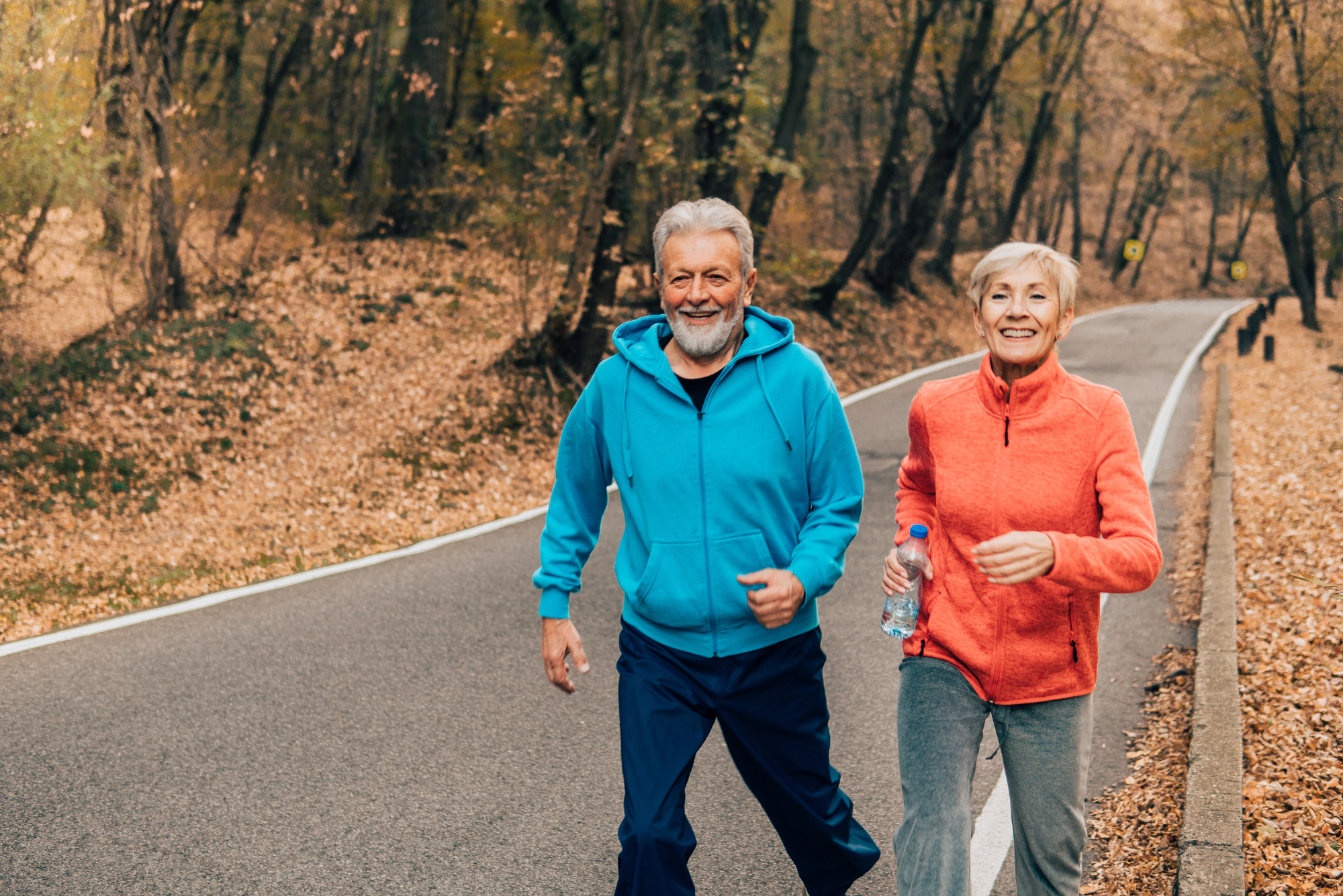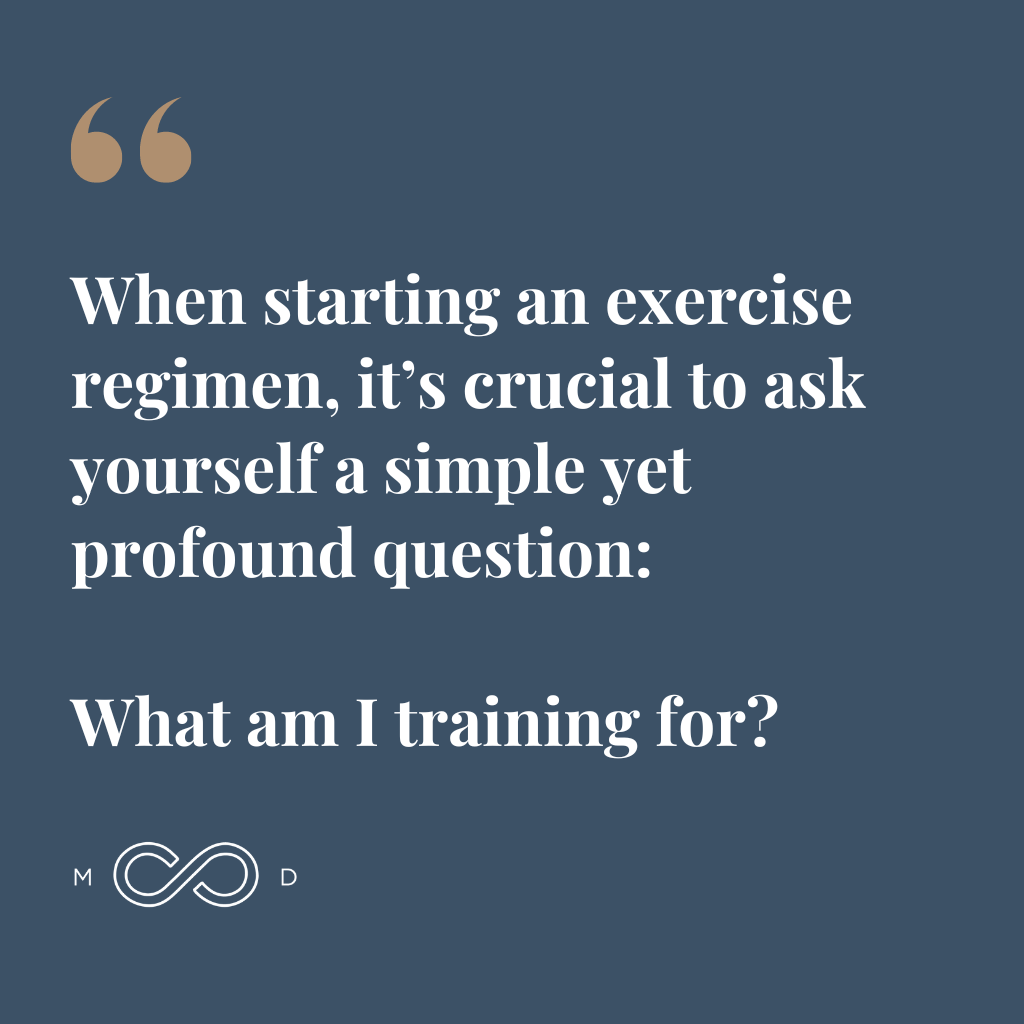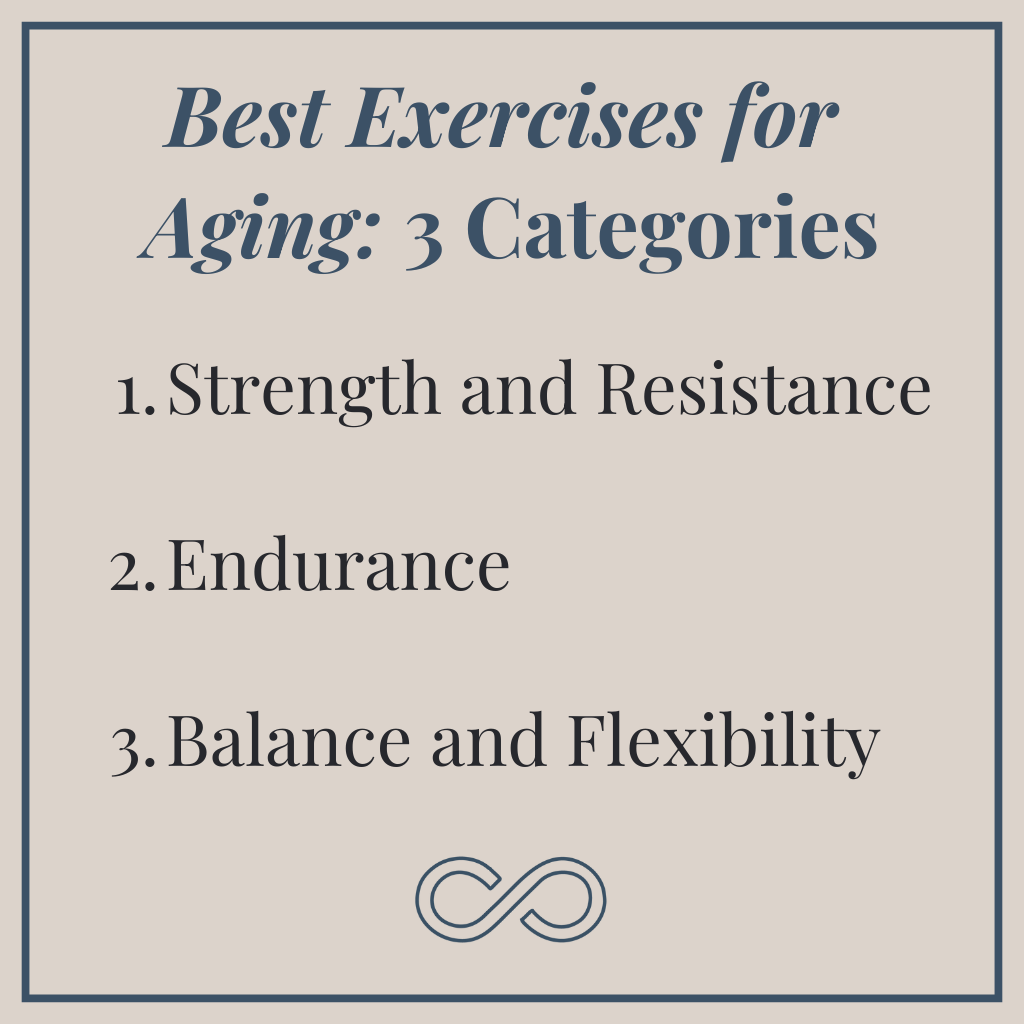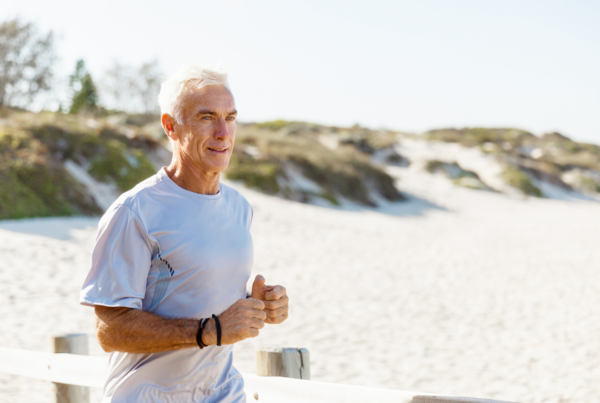It’s difficult to overstate the role of exercise in pursuing a long and healthy life. Especially when considering the topic of longevity, exercise may have an even greater impact than other lifestyle factors like nutrition and sleep.
Exercise seems to directly correlate with longevity and enhanced quality of life well into a person’s later years.
And for many of us, these are the two objectives: a better lifespan and healthspan.
But exercise is such a broad notion that sometimes we can’t see the forest for the trees. With so many avenues and options, we have difficulty picking a specific strategy, so we end up doing nothing.
To help you out of the exercise quagmire, let’s discuss at some strategies for optimal aging through exercise along with the best exercises for aging.
Ask Yourself: What Are You Training For?
When starting an exercise regimen, it’s crucial to ask yourself a simple yet profound question: What am I training for? This question serves as the cornerstone of your individual exercise strategy, the north star guiding your efforts.
Everyone’s goals for their future vary. Whether it’s running a 5k, enjoying a game of pickleball with the neighbors, or playing on the floor with your grandchildren, understanding your future aspirations gives you a starting point.
The Best Exercises for Aging: 3 Categories
For those interested in exercise for optimal aging, I suggest focusing on three primary areas: strength and resistance, endurance, and balance and flexibility. These form the foundation of a well-rounded fitness regimen, from which you can derive the best exercises for aging well.
Strength and Resistance
Strength and resistance training play a pivotal role in maintaining muscle mass and bone density, which becomes especially important as we age. Even for otherwise healthy adults, studies show lifelong exercise confers significant benefit well into later life.
Remember, though, that strength training for an athletic event in your 30s or 40s is different than strength training to ensure you have quality time with your family in your 70s.
At each stage of life, there are unique demands and reasons for strength training. What remains the same as we transition into middle life and beyond is simple: If you don’t use it, you lose it.
Starting in our early 50s, progressive muscle loss is a biological default. So from this point on, maintaining muscle mass is the name of the game. What does this look like? Strength and resistance training.
To get the most benefit from this form of exercise, you’ll want to push your muscles to the point of exhaustion and fatigue. This stimulates growth (hypertrophy) and improves metabolic efficiency.
Knowing your goals helps you determine what type of strength and resistance training to pursue. Some people want muscle size (medium weight, high reps), and others want pure strength (high weight, fewer reps). The goal determines the technique. Most people interested in exercising for healthy aging will want some combination of both.
Endurance
When it comes to endurance, one of the best types of exercise for aging is Zone 2 training.
With zone training, there’s a strategic purpose behind every zone. So again you have to consider, what are you training for?
When I visualize myself at 90, I’m not looking to run wind sprints or help the neighbor move a couch upstairs. I want to take my grandkids trekking through Disney World and hike all the national parks.
For this kind of life, endurance is key, and Zone 2 training is the Goldilocks zone — not too hard, not too easy, but just right. In fact, one of the challenges of Zone 2 training is not working out too hard.
Exercising in Zone 2 means hitting 60–70% of your maximum heart rate, providing the perfect balance of intensity and sustainability. You might achieve this through a brisk walk or a leisurely bike ride. But if your usual walk takes a turn uphill or takes place at elevation, your heart rate could easily pass beyond the Zone 2 range.
Wearables that give you a picture of your current heart rate offer an excellent means for getting to — and staying in — Zone 2 training.
Balance and Flexibility
Strength and endurance hog a lot of the spotlight, but balance and flexibility are hidden gems when it comes to aging gracefully and maintaining your quality of life.
First, let’s talk about the elephant in the room — the risk of falling. As we age, the risk of taking a tumble becomes increasingly prevalent, an especially dangerous prospect for seniors with osteoporosis. From broken hips to head injuries, falling can have serious consequences.
By focusing on improving your balance and flexibility, you significantly reduce that risk.
Furthermore, the ability to quickly get up from a chair or off the floor can make an enormous difference in your quality of life. And where does that ability largely come from? Balance and flexibility. These seemingly small components of fitness have a huge impact on your day-to-day life and overall well-being.
Just think about all the magic moments that happen on the floor with your kids and grandkids — playing games, building forts, or simply snuggling up for story time. These are the moments we train for, the ones we don’t want to miss.
So, what are the best exercises for improving balance and flexibility as we age? Practices like yoga and stretching are fantastic for this, as they give you a targeted focus on areas you don’t necessarily reach with strength or endurance training alone. They also magnify the involvement of neurological pathways — essentially, how your brain communicates with your muscles and joints.
Integrating additional strategies to maintain balance, such as standing on one leg or practicing tai chi, can also be extremely worthwhile. When it comes to staying strong, healthy, and vibrant as you age, balance and flexibility are your secret weapons.
Talk With a Concierge Physician About the Best Exercises for Aging Well
One of my favorite things about being a concierge physician is time. I’m no longer forced to rush through appointments with patients. Instead, I have time to get to know them and gain insights into their lifestyles and goals.
If you’re on the hunt for the best exercises for aging well, speak with your concierge physician. Together, you’ll be able to discuss the various types of strength, endurance, and balance and flexibility training available, and which would best suit your circumstances.
And remember: The earlier you start, the more your future self will thank you!

Dr. Wright joined Brentwood MD in 2022 as the model allows him to spend more time connecting with patients and build a foundation of exceptional care. He is a Nashville native and completed his family medicine residency at the University of Tennessee Health Science Center, where he also served as Chief Resident. He believes that your health deserves a prominent position on your priority list, and would be honored to serve you and your family.









